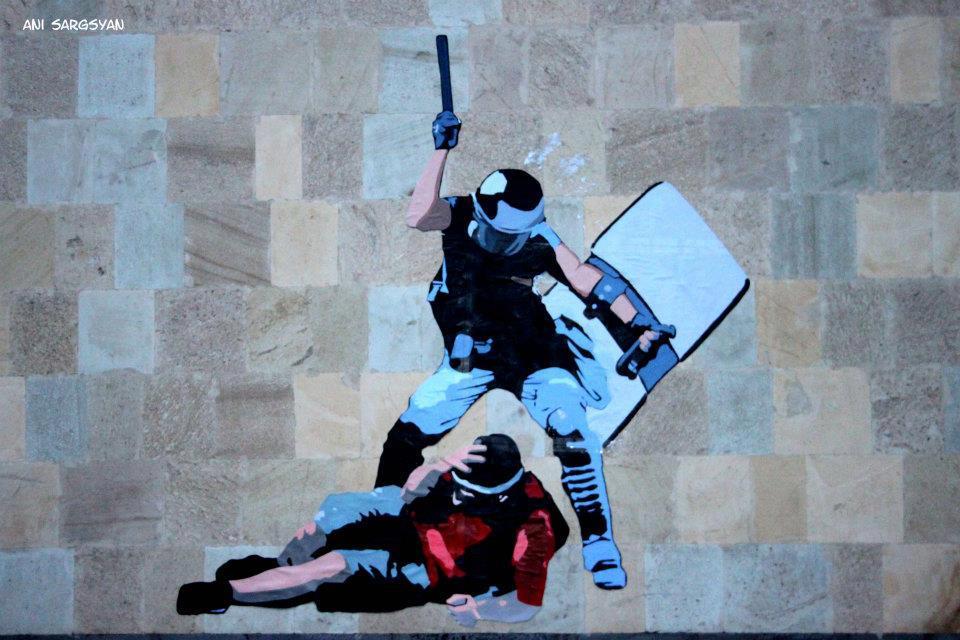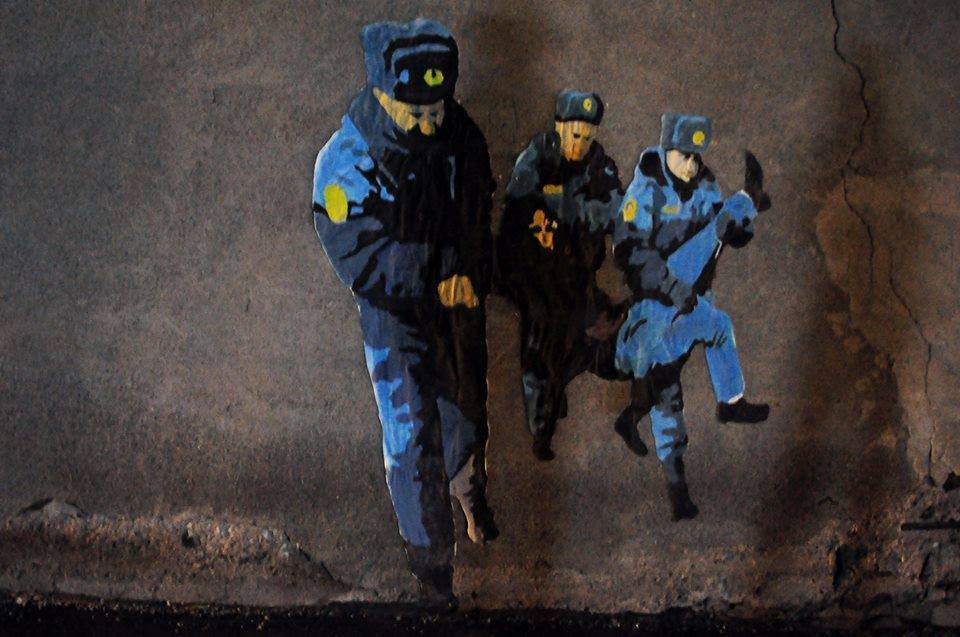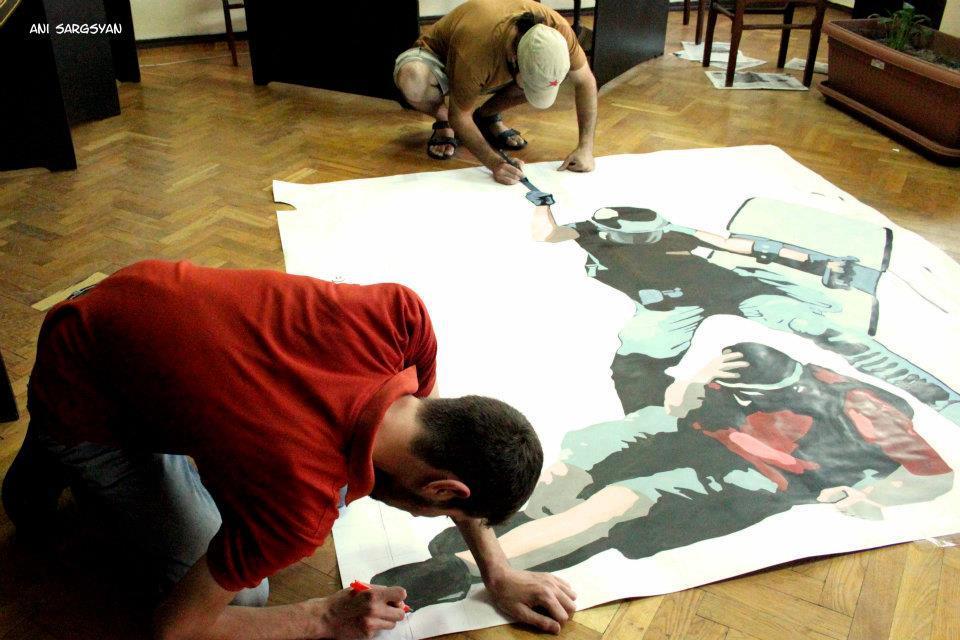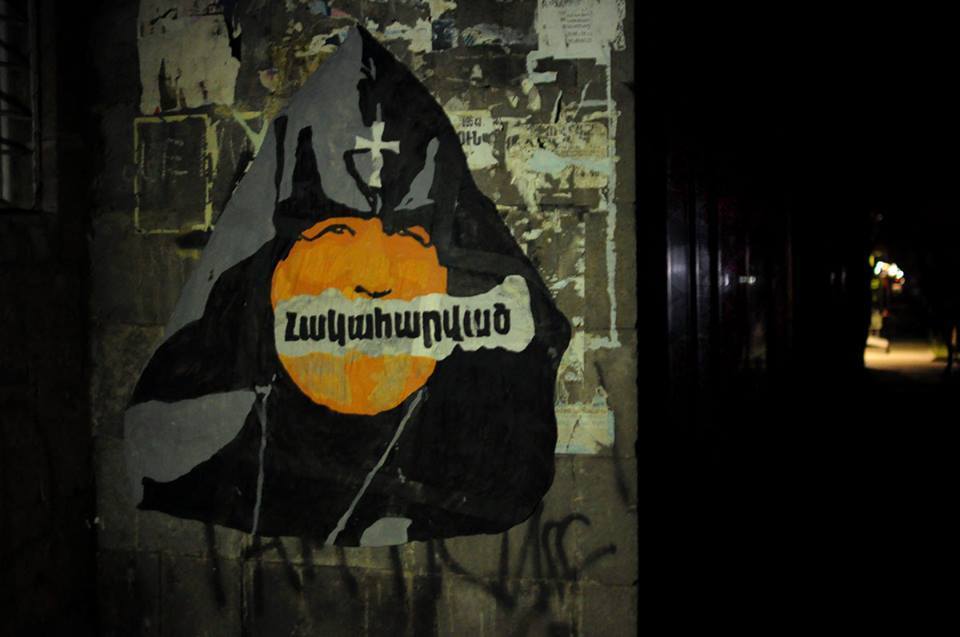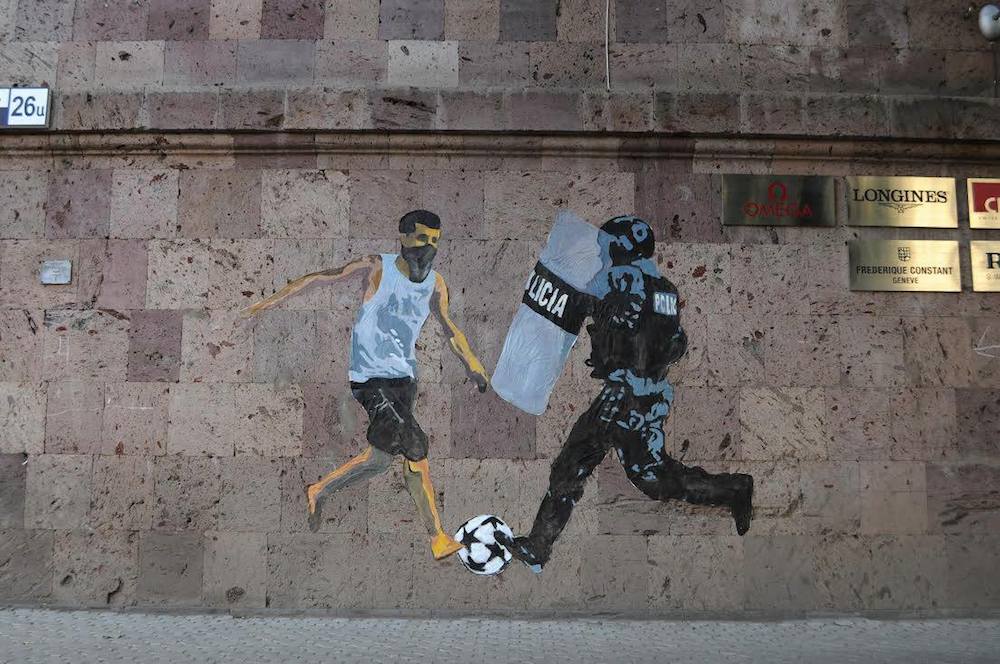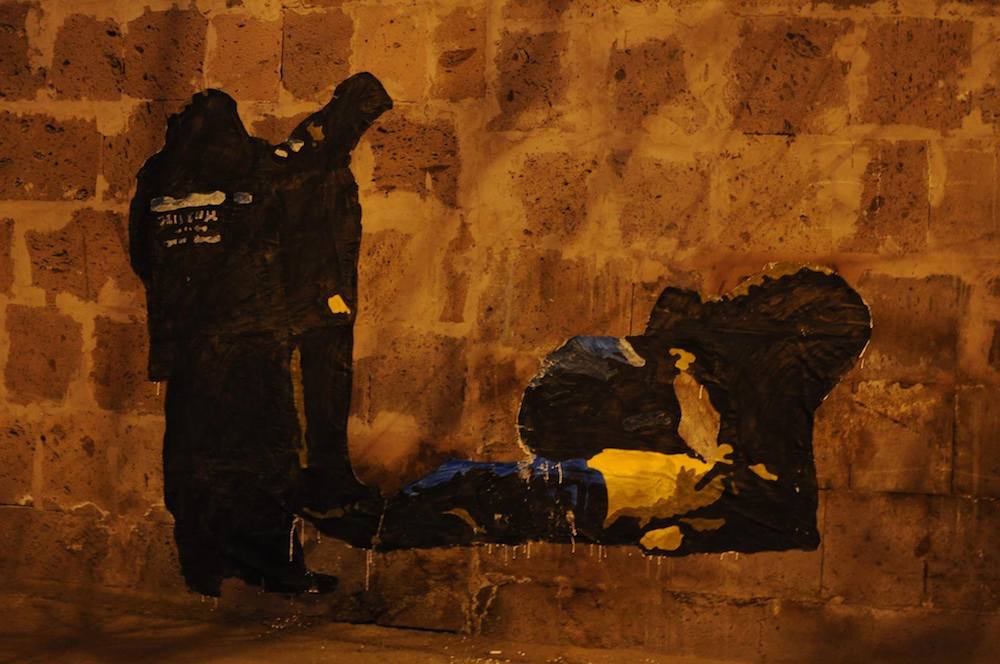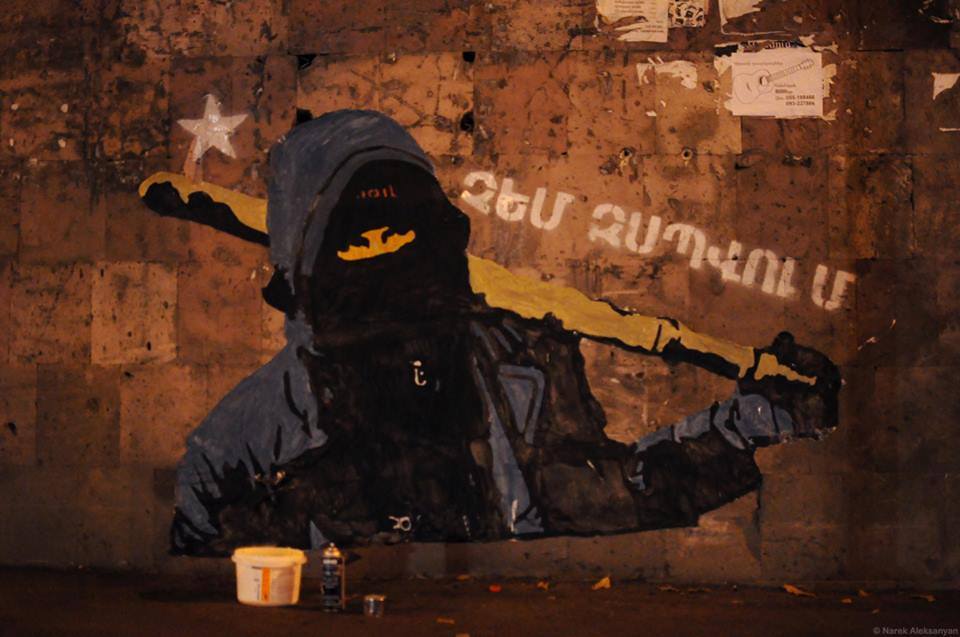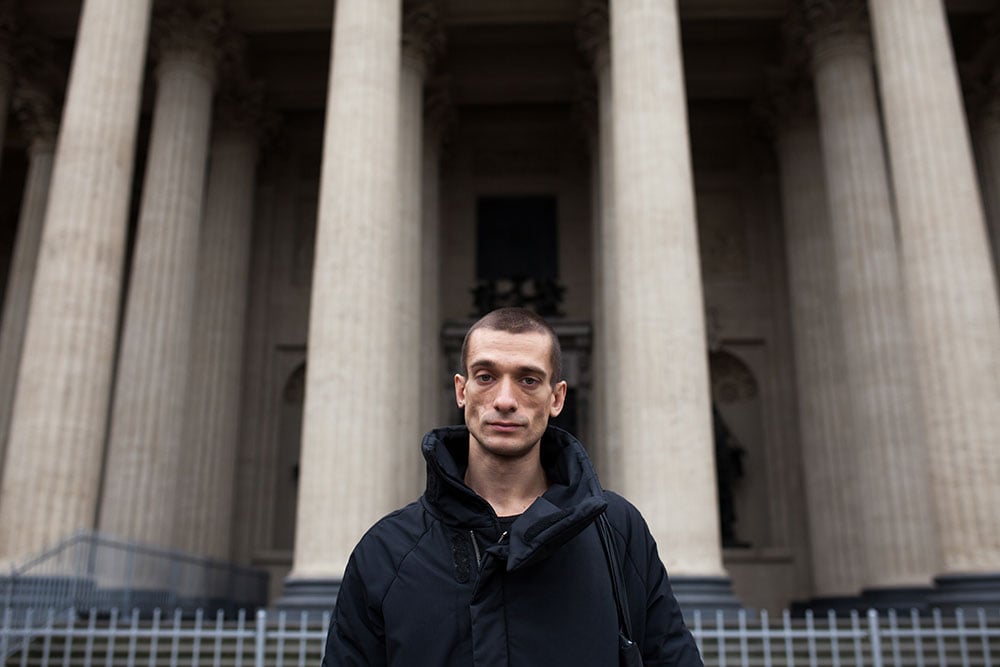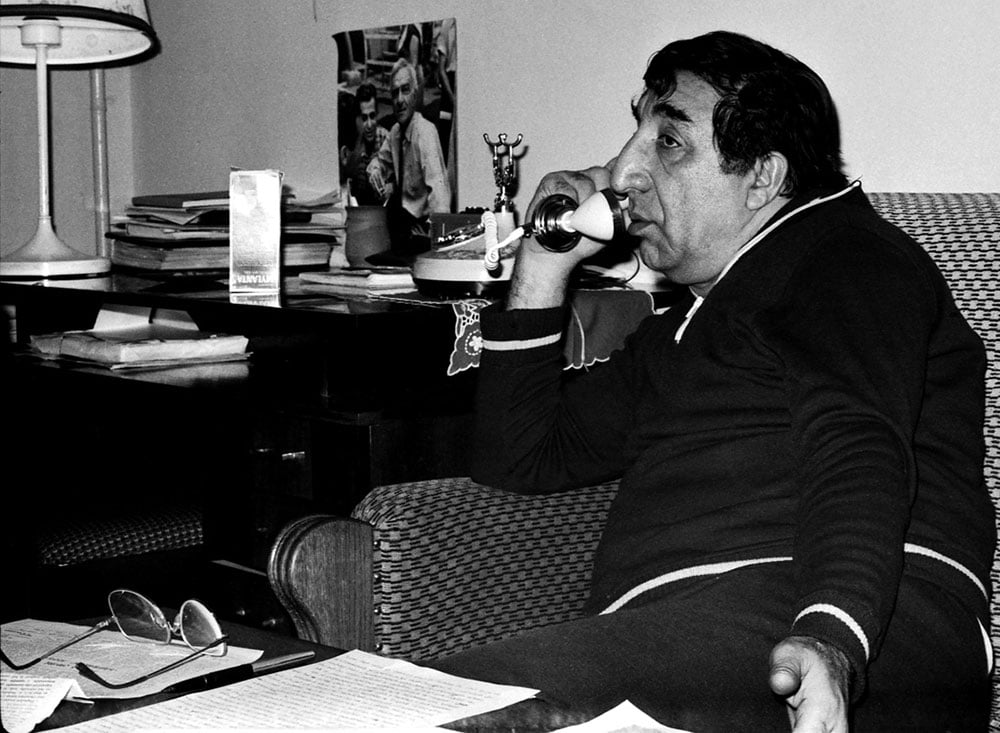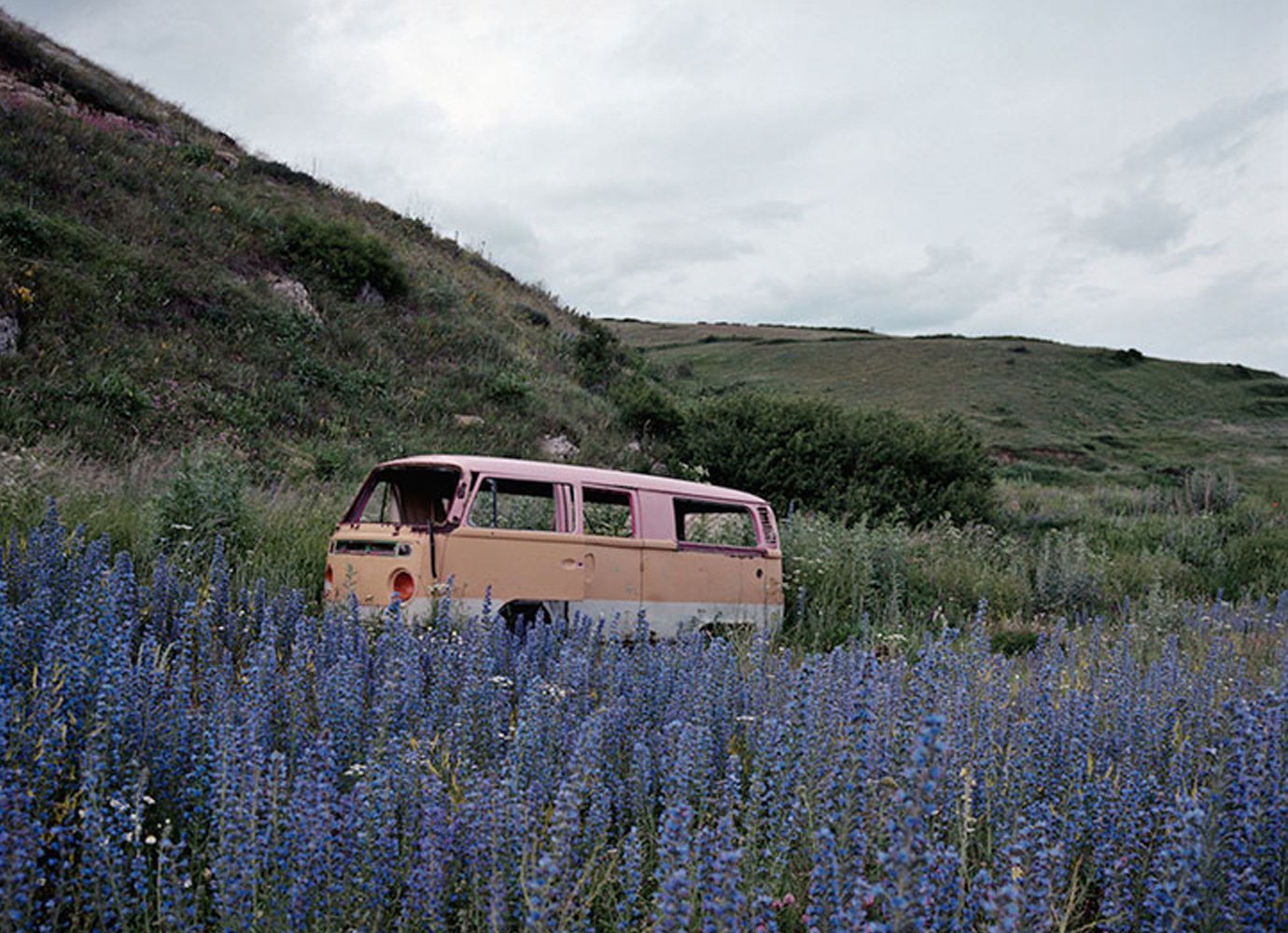Street illegal: meet the artivists galvanising political protest in Armenia
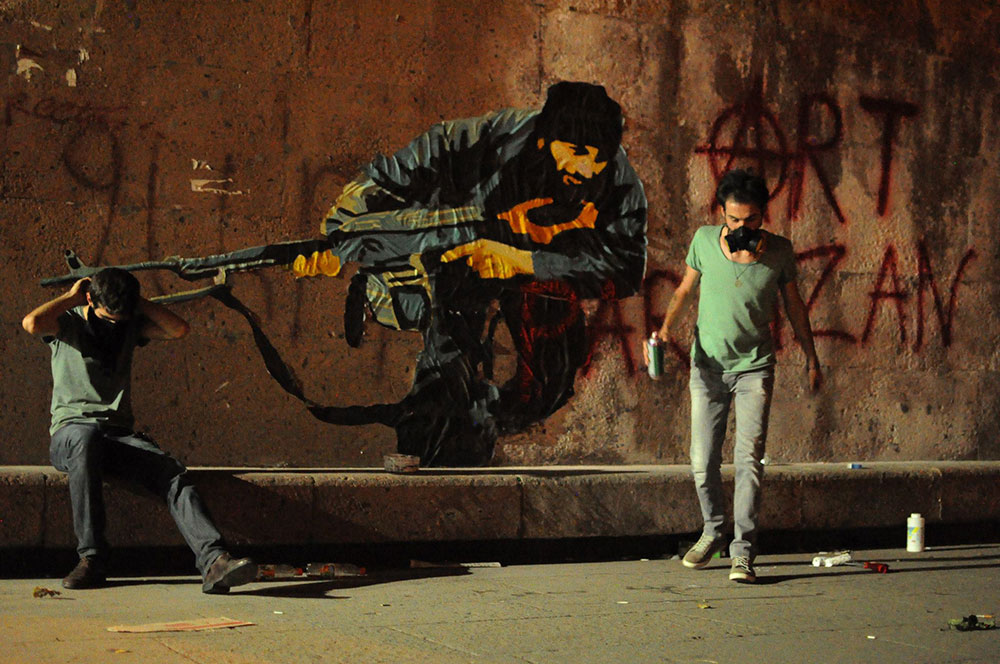
Political activists in Armenia are turning to street art and performance to draw attention to injustices and support ongoing protests in Yerevan. The Calvert Journal caught up with prominent ‘artivist’ Artak Gevorgyan from the Counterstrike group
Performance artist Artak Gevorgyan made headlines in December 2015 when he “drove” around the Armenian capital Yerevan in a green hand-painted cardboard tank. His route took him past several state buildings like the central electoral commission, the constitutional court, and the president’s house, before ending the journey by “crashing” the cardboard vehicle into the doors of the National Security Service building. The performance aimed to draw attention to the government’s monopoly on power — symbolised by the tank. “I just wanted to see how they [the government] would react to the fact that I also have a tank. And that I use my tank against them,” Gevorgyan explains.
This led to an arrest and later a court trial, in which Gevorgyan faced up to two years in prison for violating the public order, “disrupting the normal activities of security personnel at the NSS building” and “causing fears over property protection”. In late June he was acquitted — a surprising turn of events if you know the history of Gevorgyan’s previous altercations with the law. All these related to art — his own and that of his street art group, Hakaharvac (Counterstrike). The group has been subject to police attention from its inception. They have been detained over 10 times, and sometimes even charged as a result of their work. “It was very political right away. Counterstrike was founded for raising political issues with the help of art,” Gevorgyan explains.
Counterstrike’s first art piece was triggered by the arrest and beating of civil rights activist Tigran Arakelyan in 2012. The group placed a sticker depicting a police officer beating a person on the exact spot that Arakelyan was beaten up. Since then Counterstrike, which has had three or four members over time, has been leading the protest art movement in Armenia, highlighting corruption and police brutality towards dissidents and political opposition figures. The group also supports the Electric Yerevan protests, which began last summer in response to electricity price hikes and grew into further protests in July this year.
‘I want art to raise political issues and to make people see and think’
Counterstrike’s artwork often features phrases from the protest movement that have become local memes. One is a simple phrase on a wall: “They are all bitches.” Gevorgyan explains that this is something an old lady said to him when they discussed the country’s politicians. Some of their other recent works references the murder of the Russian politician Boris Nemtsov, the Nagorno-Karabakh conflict and the Armenian government’s attempts to make Russian a state language in the country. Gevorgyan explains that they don’t want to single out any particular issue in their work: “If the issue concerns Armenia, it concerns me because I live in Armenia. I want art to raise political issues and to make people see and think.”
Most of the group’s projects may be less TV-friendly than Gevorgyan’s tank performance but they are still ruffling feathers. Gevorgyan says most of their graffiti survives only a few days — and sometimes even seconds — before being removed by either the police or the municipal authorities. “If any work remains on the wall untouched it means that the authorities like it, and that it is not good. You should do something that infuriates them,” he says. The preservation of artwork was never Counterstrike’s first priority. They create it not for galleries or future generations, but to incite action and express solidarity with other activists. “When a policeman sees us portraying something he doesn’t know how to react, he starts calling his superiors on the phone,” says Gevorgyan. “Then they figure out what exactly is portrayed and whether or not it’s political, and after that they immediately destroy the artwork and take us to the police station.”
The line between street art and vandalism is thin, especially in a city that is only getting used to street art, like Yerevan. When the art is politically charged that line gets even thinner. But Gevorgyan insists that Counterstrike never deface historical buildings, and that their art is also eco-friendly as they only use recycled paper.
Several journalists have drawn parallels between Gevorgyan and Petr Pavlensky, who was recently released in Moscow after standing trial for setting fire to the entrance of the FSB building. The similarities are superficial — the political context of the performances, the arrests and the trials, as well as their targets, the security services — but the differences are also obvious. Pavlensky’s performances, while political in their nature, have little activism in them, while Gevorgyan says he is an activist first and foremost. Gevorgyan downplays the artistic side of his work, stressing its public reach instead. “For me the street is the best space to create and display art, as well as protest what is important to you, as you get a direct connection with the public,” he says.
‘Now our studio will be everywhere’
One of Counterstrike’s bigger projects was an art commune called Home 45. A space in Yerevan open to all artists and political activists, it also served as a studio for the group. The idea boomed during the Electric Yerevan protests last summer as it offered the protesters a place to rest, have a coffee break or draw some new signs before going back to the protests, which lasted for nearly two months. The space closed in the end of May this year because the landlord was forced to evict his tenants when the police found out the rent was never formalised in contract. Gevorgyan commented on the eviction with optimism: “Now our studio will be everywhere.” But then, considering the nature and placement of their art, wasn’t it always?
